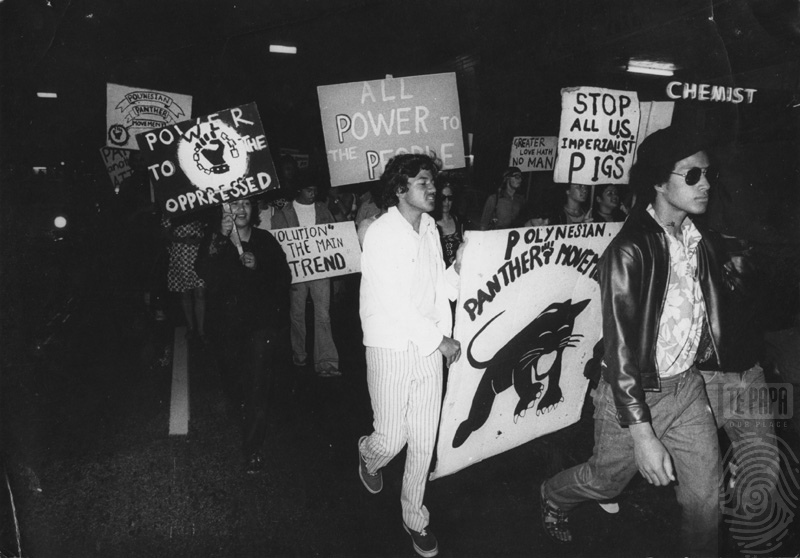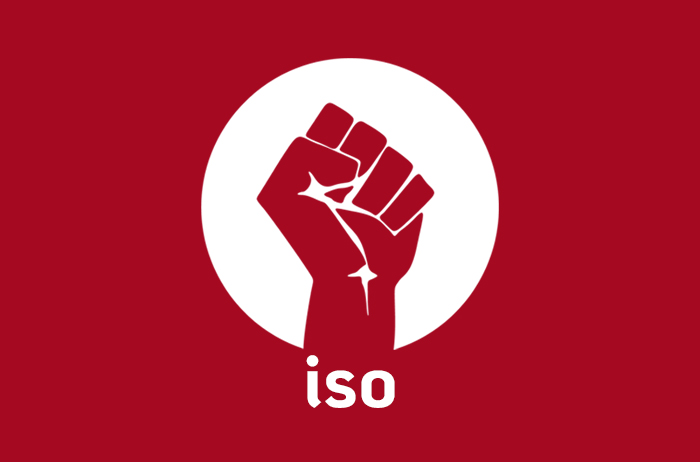We live in an age of racism. In Australia, the federal and Western Australian governments’ attempt to drive Aboriginal people in remote communities from their land is only the latest episode in the war on Indigenous people.
In the United States, there is an epidemic of police slayings of predominantly Black young men. In Europe, fascist and far-right parties have gained ground, attacks on the Roma people continue and anti-Muslim racism against refugees and migrants is extreme.
It’s clear that this is a global problem.
How did we get to this and how do we change it? Socialists locate the beginnings of racism in the birth of capitalism and argue that to truly challenge racism, we have to challenge the system that produces and benefits from it.
Capitalism and slavery
Nineteenth century revolutionaries Karl Marx and Friedrich Engels described the realities of British industrialisation: child labour, the horrors of the mines and the mills, and the lives lost to the appalling working and living conditions of the time. Accompanying this was the mass kidnapping of African people and their sale into slavery in the colonies of the Americas.
“The veiled slavery of the wage-labourers in Europe needed the unqualified slavery of the New World as its pedestal”, wrote Marx in Capital. “Capital comes dripping from head to toe, from every pore, with blood and dirt.”
Between 1500 and 1870, slave traders in the service of European powers kidnapped 12 million people from the coasts of Africa. A nightmarish journey across the Atlantic followed. The prisoners were chained together, unable to move and barely able to breathe. One in ten died in transit.
On arrival in North and South America or the Caribbean, plantation owners bought the survivors in a sickening imitation of the sale of livestock: “The purchasers examined them for defects, looked at the teeth, pinched the skin, sometimes tasted the perspiration to see if the slave’s blood was pure and his health as good as his appearance”, wrote historian C.L.R. James in The Black Jacobins.
Work on the plantations was ceaseless and brutal. To keep human beings in subjugation, says James, required “a regime of calculated brutality and terrorism”. Slaves were forbidden to read and write, to gather in groups, or to use religion to express a common cause. Any actions that hinted of organisation had to be stamped out.
Around one-fifth of those sold into slavery died within a year of their purchase – worked or beaten to death.
Racism
It’s tempting to assume that vile racism on the part of the planters brought about this monstrous episode in history. Yet, as Eric Williams wrote in his classic 1944 work Capitalism and Slavery, “slavery was not born of racism: rather, racism was the consequence of slavery”.
The first source of labour in the new world had been white indentured servants. People who wanted a better life than that offered by the dismal prospects of Britain at the time would, in exchange for passage to the Americas, sell themselves into the service of a wealthier landowner for years at a time.
But this form of unfree labour could not satisfy the needs of the growing colonies. Small farmers were pushed aside by the rapacious encroachment of the plantation system, which produced not for subsistence, but for the mass export of monoculture crops. From the 1680s onwards, African slaves became the main source of labour on such plantations.
“The reason was economic, not racial”, Williams wrote. “[I]t had to do not with the colour of the labourer, but the cheapness of the labour … [the planters] would have gone to the moon, if necessary, for labour. Africa was nearer than the moon, nearer too than the more populous countries of India and China. But their turn was to come.”
A scaffolding of racism grew around the slave system to justify and reinforce it. Generations of people grew up in a society in which the word “Negro” was synonymous with the word “slave”. Racism was born.
All men are created equal?
The plantation, factory and slave ship owners of the 18th century made immense profits through the triangular trade.
“The slave ship sailed from the home country with a cargo of manufactured goods”, wrote Williams. “These were exchanged at a profit on the coast of Africa for Negroes, who were traded on the plantations, at another profit, in exchange for a cargo of colonial produce to be taken back to the home country.”
This colonial produce supplied the raw materials for industrialisation in England. In this way, the triangular trade acted as a motor for the development of capitalism: “By 1750 there was hardly a trading or a manufacturing town in England which was not in some way connected with the triangular or direct colonial trade.”
Thus, as Robin Blackburn writes in The making of New World slavery, the emerging system of capitalism – characterised in theory by the sale of free labour on the market – built “one of the largest systems of slavery in human history”.
Along with this contradiction came a clash of ideology. The American Revolutionaries raised the ideals of human rights, democracy and equality. Radicals such as Thomas Paine supported abolition of slavery. But the champions of profit did not.
“How could the founding fathers of the US – most of whom owned slaves themselves – reconcile the ideals of liberty for which they were fighting with the existence of a system that represented the exact negation of liberty?”, asks US socialist Lance Selfa. “The ideology of white supremacy fit the bill … to rule Black slaves out of the blessings of liberty, the leading head-fixers of the time argued that Blacks weren’t really ‘men’, they were a lower order of being.”
The defeat of slavery in the latter half of the 19th century did not bring equality for Black people; nor did it end racism. Rather, the ruling class of a transformed United States adapted racism for use in a new context. Racism, argues Selfa, “no longer justified the enslavement of Blacks, but it justified second class status for Blacks as wage labourers and sharecroppers.”
Colonialism
The ideology of white superiority fit neatly with the age of empire. Rudyard Kipling exalted those who would “take up the white man’s burden”, imposing colonial will on “new-caught, sullen peoples – half devil and half child”. World powers competed for territory and resources, justifying their part in the scramble for Africa, and the conquests of Asia and the Middle East, with a racist narrative in which white heroes brought “civilisation” to lesser peoples.
Racism supported the British colonial project in Australia – an immense land grab that was subsequently justified by denying the existence of Aboriginal peoples. Although Terra Nullius was constantly disproved by the courageous resistance of Indigenous people, the British colonists steadily expanded their settlements, forcing the original inhabitants from their land.
The developing wool industry, and the need for vast tracts of grazing land for sheep, prompted some of the worst massacres of Aboriginal people in the 1830s and 1840s as the squatters pushed hundreds of thousands of people from the flat grasslands of eastern Australia.
As the Australian colonies grew, and with them their demand for labour, the emerging ruling class changed its policy in some locations. In response to the needs of industry, Aboriginal people were effectively enslaved, rather than exterminated.
A pseudoscience emerged to justify the actions of empire all over the world, and to refine the concept of “race” into its modern form of a set of biologically inherited characteristics.
Fighting racism, fighting the system
Progressive biologist Stephen Jay Gould, in The mismeasure of man, debunked the notion that race correlates with intelligence or mental capacity; and the work of scientists such as Richard Lewontin has shown that race is not a meaningful way to categorise people genetically. But simply disproving these poisonous theories is not enough to get rid of racism. Racism was born from the economic needs of capitalism and persists today because capitalism still exists.
Today, racism is still used to used to justify land theft and war, to distract people from attacks on their rights and living conditions, and, importantly, to turn working people against each other.
Divide and rule has been around a long time. The abolitionist Frederick Douglass described the process in 1866:
“The hostility between the whites and blacks of the South is easily explained. It has its root and sap in the relation of slavery, and was incited on both sides by the cunning of the slave masters. Those masters secured their ascendency over both the poor whites and the blacks by putting enmity between them. They divided both to conquer each.”
Today, owing largely to the efforts of anti-racist movements, voicing a belief in the biological inferiority of non-whites is unpopular. Instead, the terrain has shifted to cultural racism: Muslims oppose democracy, Aborigines are bad parents, and other lies. But the function of the ideology is the same.
Identifying the roots of racism, and the reasons it persists, gives us a powerful tool in the struggle against it. If we know that these ideas are produced by a social and economic system that needs oppression and subjugation to function, we know that we need to fight this system if we are to challenge racism. Likewise, any genuine struggle against capitalism must be anti-racist and stand in solidarity with those subject to it.
[First published in Red Flag, the newspaper of Socialist Alternative]







